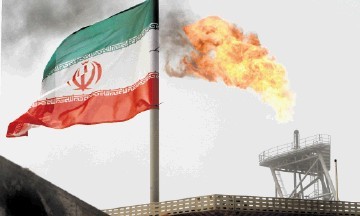
The return of Iranian oil to the international market is hurting Russia’s main crude grade, forcing it to trade at the biggest discount in two years.
The discount of Russia’s Urals grade in the Mediterranean to global benchmark Dated Brent widened to $2.40 a barrel, according to traders monitoring the Platts window. That’s the lowest since June 2014. Vitol offered the grade again on Friday at smaller discounts. It didn’t find a buyer.
Urals crude, which is similar to Iran’s flagship blend, became the main beneficiary when the Persian nation was barred from selling oil in Europe in 2012 because of its nuclear program. Since those sanctions were lifted in January, the Russian grade has suffered, according to four traders familiar with the market.
“Iranian exports have been impressive,” giving refiners in Europe a wider choice of supply, Abhishek Deshpande, an analyst at Natixis SA said by e-mail.
Challenges unloading cargoes at the Italian port of Trieste — a major hub for refineries in Eastern and central Europe — are also contributing to pricing pressure, traders said. Unloading at a jetty there slowed, with just four vessels each with a capacity of 1 million barrels loading since the start of April, compared with an average of four vessels a month in the first quarter.
Meanwhile, a series of strikes at French refineries last month reduced crude intake, according to DNB Markets.
“This development for Urals is natural when Iran ramps up at the same time as there are strikes in several European refineries, hampering physical crude demand,” Torbjoern Kjus, chief oil analyst at DNB Markets, said by e-mail.
Three oil refineries in France have yet to restart completely, according to Total SA, which operates five plants in the country.
Iran has wasted no time in trying to regain market share, according to the International Energy Agency. Exports of crude last month reached 2.1 million barrels a day, almost pre-sanction levels, the agency said on June 14. Before sanctions were tightened four years ago, Iran shipped 2.2 million barrels abroad, it said.
Flow of Iranian crude grades to countries in the European Union was 355,000 barrels a day in May, compared with 330,000 in April, according to tanker-tracking data compiled by Bloomberg.
“Iran has moved swiftly to reclaim its European customers,” the IEA said.